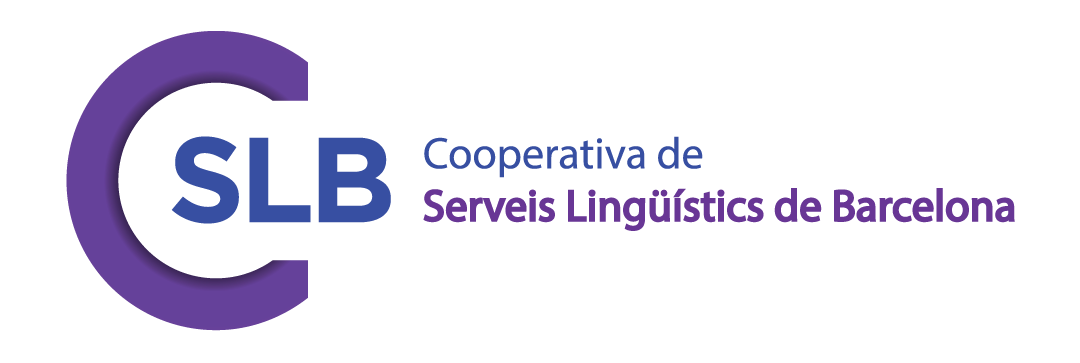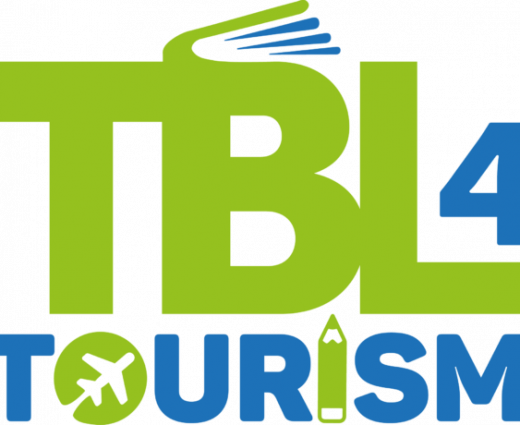TBLT: From theory to practice (Oct 21)
Our fourth tutored online Task-Based Language Teaching (TBLT) course is now available for booking! This 100-hour course, with tutors Geoffrey Jordan and Neil McMillan, and special guest contributions from TBLT, instructional design and assessment experts Peter Skehan, Roger Gilabert, Marta González-Lloret, Rose Bard and Glenn Fulcher, as well as recordings of the late Michael Long, will begin on October 22nd 2021 (with pre-course activities from Oct 4th) and will end on April 7th 2022.
A free introductory taster session, Why TBLT?, is open now. Further sessions will open according to the course schedule once you have signed up.
For the first time, participants can sign up for individual modules or the whole course! Further modules can be taken in future iterations of the course to achieve complete certification.
Please see further below for a detailed description and module dates. You can contact us with any questions about future courses via the form on our home page, or sign up directly below.
Description
This 100-hour, online tutored course is aimed both at classroom teachers and course designers who are interested in adopting task-based language teaching (TBLT) to deliver English as a second or foreign language. It will also be relevant to teachers of other languages who are interested in this approach, as well as teacher-trainers, directors of studies and materials writers. No prior experience of TBLT is needed, but some grounding in the current theory and practice of English language teaching (ELT) will be necessary.
Our premise is that the dominant, structure-by-structure approach to teaching English and other languages, both in private and public sector contexts around the world, is inefficacious. We set out to make the case why, and to argue that TBLT—which is aimed at learners’ specific needs and respects what we know about language learning—should take its place, both in traditional and online environments.
To do this, we will argue that Mike Long’s version of TBLT is the optimum version. Our course is built around a series of tasks relating to key aspects of Long’s TBLT, from needs analysis through syllabus and material design to classroom delivery and assessment. At the same time, however, we acknowledge that Long’s TBLT is a resource-heavy model which is not easily applied in more restricted circumstances. We will therefore be exploring, in parallel, lighter versions of TBLT that could be adopted by smaller schools or individual teachers working with groups with specific needs.
We will also look at the increasingly important influence of new technologies on the TBLT field. As the tasks people need to perform are increasingly mediated by technologies, so is TBLT itself, with consequences for how TBLT courses are designed and run.
- The course is presented by Geoffrey Jordan and Neil McMillan. It also features guest contributions from TBLT specialists Peter Skehan, Roger Gilabert and Marta González-Lloret, language assessment expert Glenn Fulcher, and Rose Bard, an instructional designer working with TBLT in Minecraft. We are also privileged to have exclusive recordings of TBLT pioneer Michael H. Long, who contributed to earlier versions of this course and sadly passed away in February 2021. We dedicate this course to his memory.
Course aims
Overall, the course aims are to:
[dt_sc_fancy_ul style=”tick”]
- Introduce, explore and connect the theory and practice of Task-Based Language Teaching (TBLT)
- Make the case for Long’s TBLT as the optimum version, informed both by research and classroom experience
- Present lighter versions of this model for adoption in more restricted circumstances
- Explore the implications of technology for TBLT
- Prepare teachers and course designers to implement TBLT in a relevant context
[/dt_sc_fancy_ul]
Course structure & dates
The main part of the course is divided into five modules, with additional unassessed pre-course and mid-course modules. Each module, composed of two or three sessions and lasting 4-5 weeks, is built around a specific Output task which is linked to the wider project of developing and implementing a TBLT course. Most sessions take place over two weeks. Overall, we estimate that participants will need to dedicate 4-5 hours per week to the course, including background reading and assessment, with a total commitment of around 20 hours per module and 100 hours for the whole course.
The table below summarises the course structure and key dates.
[table id=24 /]
Most sessions include:
[dt_sc_fancy_ul style=”rounded-arrow”]
- Carefully selected background reading
- A video presentation from the session tutor (approx 30m)
- Interactive exercises to explore key concepts
- A forum discussion topic to explore with your tutor and fellow course participants
- A 1-hour group videoconference with a tutor (Certificate of Completion only)
- An Output task (e.g. short essay, presentation, task analysis etc.)
[/dt_sc_fancy_ul]
Course material, required reading & suggested reading
There is only one set text which participants need to acquire for themselves:
[dt_sc_fancy_ul style=”paper-clip”]
- Long, Mike. (2015). Second Language Acquisition and Task-based Language Teaching. Chichester: Wiley-Blackwell.
[/dt_sc_fancy_ul]
Aside from that, course material will be provided on a session-by-session basis. We also recommend these websites for further reading and exploration:
[dt_sc_fancy_ul style=”external-link”]
- What do you think you’re doing? (Geoff Jordan’s current blog with an extensive selection of articles on SLA and teacher-training)
- International Association for Task-Based Language Teaching (promoting research and development of TBLT, and featuring a TBLT task bank)
- O*Net (website detailing specific tasks for numerous professions)
[/dt_sc_fancy_ul]
The following books and articles are also relevant as a general introduction to TBLT, although not all of these writers agree with each other (see Long’s critique of the approach of the Willises, for example, in Long (2015), pp. 210-212).
[dt_sc_fancy_ul style=”paper-clip”]
- Long, M. H., Lee, J., & Hillman, K. (in press). Task-based language learning. In: Malovrh, P., & Benati, A. (eds.), Cambridge handbook of language learning. Cambridge: Cambridge University Press.*
- Nunan, David (2004). Task-Based Language Teaching. Cambridge: Cambridge University Press.
- Skehan, Peter (2003). Task-based instruction. Language Teaching 36, 1-14.*
- Willis, Jane (1996). A Framework for Task-based Learning. Longman.
- Willis, Jane and David Willis (2007). Doing Task-based Teaching. Oxford: Oxford University Press.
[/dt_sc_fancy_ul]
*These articles will be made available to participants when they sign up, as will other supplementary materials on a session-by-session basis.
More information
- Please use the contact form on our home page and we will get back to you as soon as we can.
- The featured image is by by Wonderlane on Unsplash.
- All other content (c) Serveis Lingüístics de Barcelona, 2018-2021. All rights reserved.
Additional information
| Course component | Whole course, Module 1: Presenting TBLT, Module 2: TBLT Needs Analysis, Module 3: Designing pedagogic tasks, Module 4: Making TBLT materials, Module 5: Facilitating, supporting and evaluating task performance |
|---|
4 reviews for TBLT: From theory to practice (Oct 21)
Only logged in customers who have purchased this product may leave a review.



Jonathan (verified owner) –
An excellent course! Mike Long’s book on TBLT is a challenging read, but Neil and Geoff helped to unpack the key ideas and encouraged us to think about how TBLT can be used in different teaching contexts. This opportunity to personalise tasks and assignments to our own individual contexts was definitely one of the real strengths of the course. It was also great to share ideas and compare notes with teachers from around the world, as well as get the chance to hear from experts like Mike Long and Roger Gilabert. Since I’ve finished the course, I’ve found myself referring back to lots of the resources for ideas for classes and training sessions with teachers. Would really recommend the course to anyone who wants to explore TBLT in their own teaching practice.
Stephen Allen (verified owner) –
Having completed the second iteration in April 2020, I can’t recommend this course highly enough. With Mike Long’s thought-provoking book and carefully selected additional reading materials, we learnt how to conduct a needs analysis in order to identify the target tasks undertaken by our own students, how to create prototypical texts and other student-specific materials from the collection and analysis of target discourse, and how to derive pedagogic tasks from target task types in order to create and sequence a syllabus targeted at students’ individual language-learning requirements.
As the course progressed, I was able to apply what I was learning to an ESP course that I was teaching at the time. The feedback I’ve since received from those ESP students included: “[this], for me personally, is a new way of teaching”, and “The end result [of this ESP course] was really what I wanted, i.e. a tailored and, most importantly, very effective course.” It is thanks to this SLB TBLT course, and Neil and Geoff’s expertise in particular, that I was able to prepare so effectively and receive such satisfying feedback from students. The online tutorials were excellent: Neil and Geoff helped me apply Long’s TBLT to my particular teaching circumstances. The output tasks were very challenging and the feedback very detailed.
Whether you have a couple of years of teaching experience or fifteen, the course will be challenging and rewarding. If you want to improve your teaching or take it in a new direction, I highly recommend this course.
paul walsh (verified owner) –
Having just finished the course, I’d just like to say how much I enjoyed it. The course helped me to plan and carry out a needs analysis, and then to design a 14-week course for the German university where I work which is now ‘live’ and running with real students. I could never have achieved this without the theoretical framework provided by the course, the guidance and support of the tutors, and the excellent special guest contributions. I would thoroughly recommend the course to ambitious teachers who want to create more engaging and original syllabuses using proven TBLT principles.
Sam Gravell (verified owner) –
This course was brilliant and has changed me as a teacher. TBLT is not another “method” of doing the same things in ELT… it’s a research-backed approach with an entirely different conception of how we learn languages and what teachers and students should do with that information.
I discovered TBLT around 8 years into my post-CELTA teaching experience, and wish I had a lot sooner. However, there is, at first glance, a lot to digest and make sense of. This well-designed course helps make TBLT and its underlying principles understandable and practical. Geoff and Neil offer plenty support and food for thought the whole way through. I have certainly become a better teacher and teacher trainer since participating in the course.